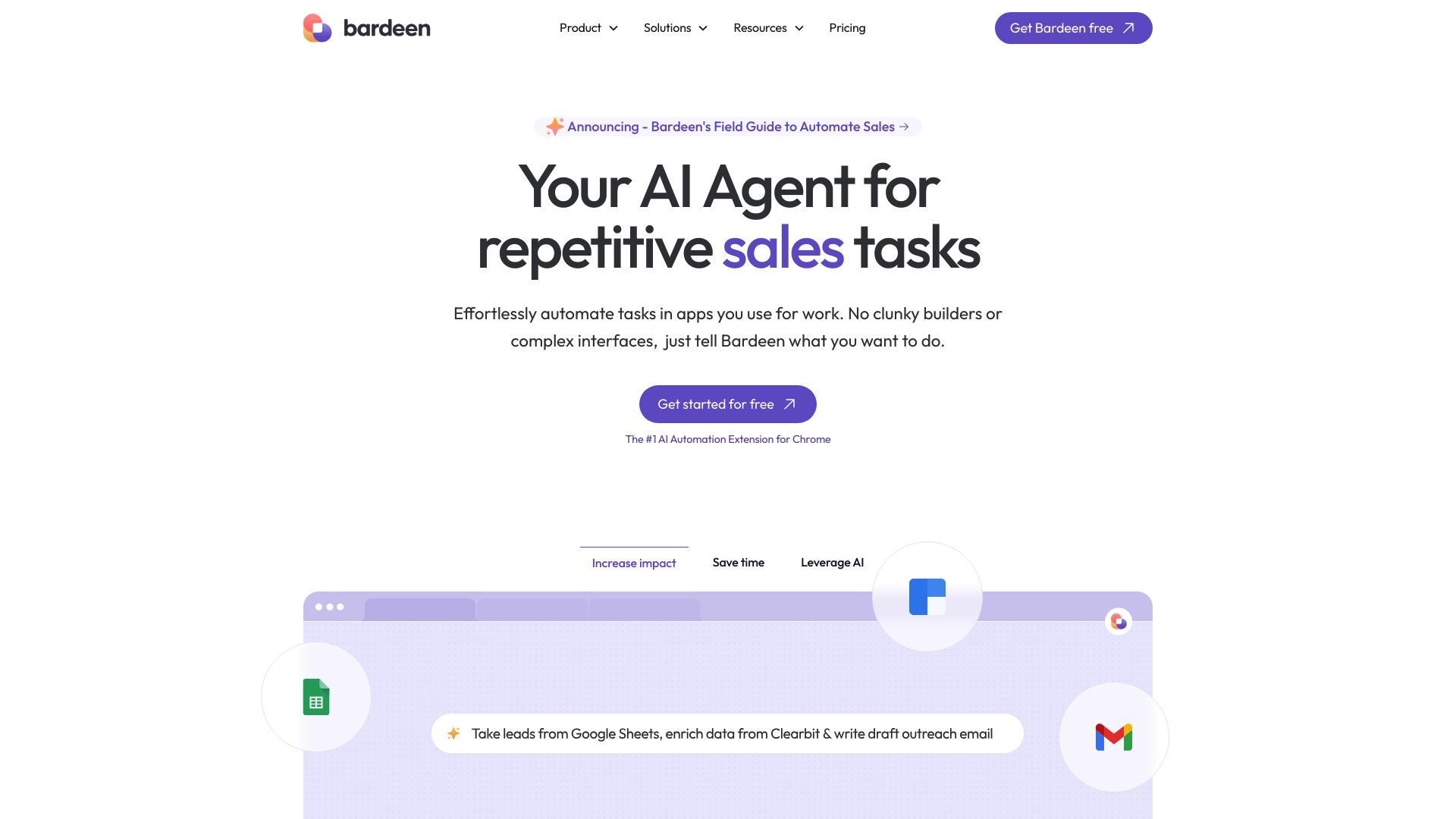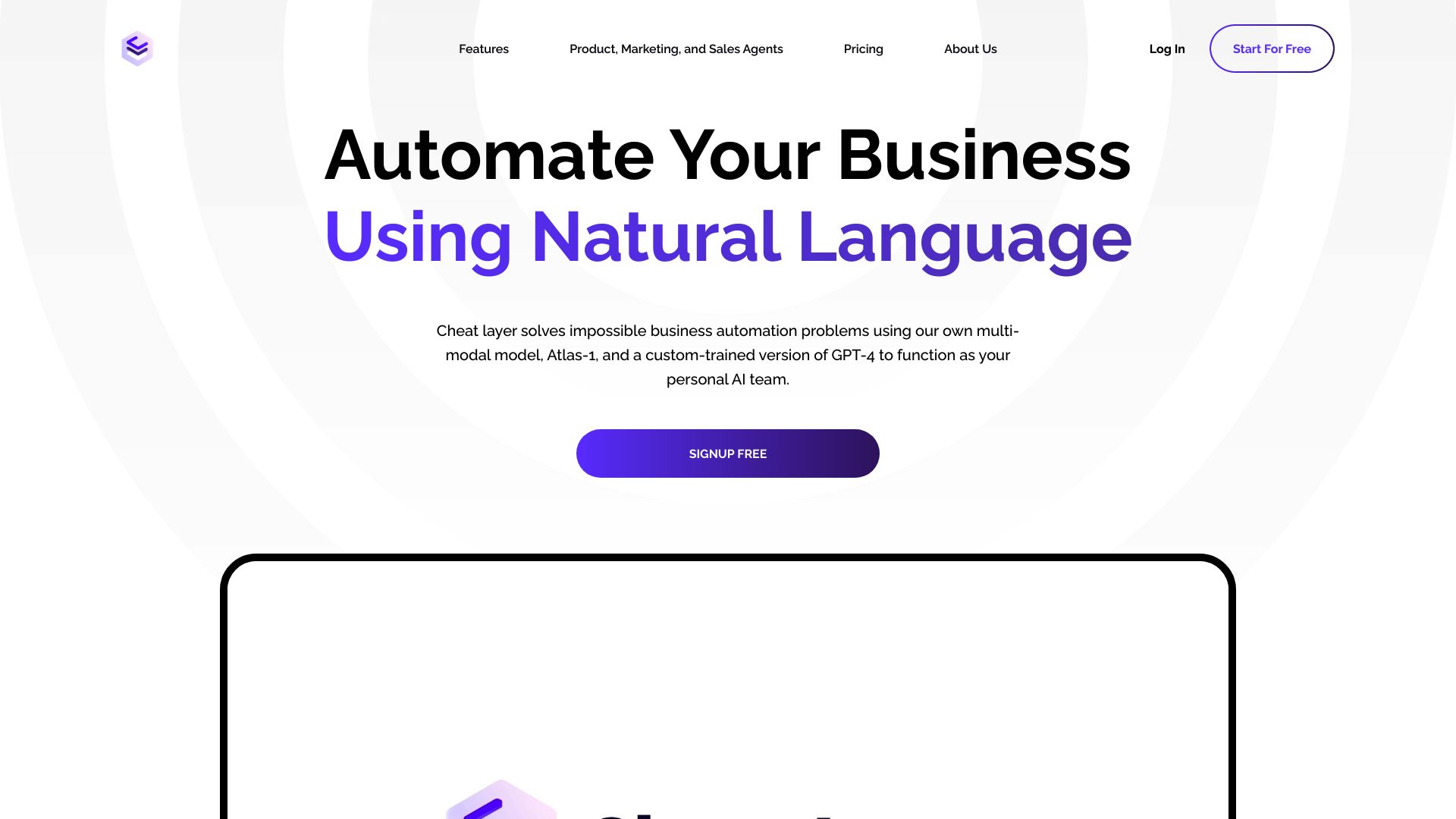Bardeen AI vs. Cheat Layer: Comparing AI Automation Tools
The AI automation landscape offers powerful solutions for businesses seeking to streamline operations and boost productivity. This comparison delves into Bardeen AI vs. Cheat Layer, and SmythOS, three platforms revolutionizing task automation. Bardeen AI excels in browser-based workflows, Cheat Layer leverages natural language processing for complex automations, while SmythOS emerges as a comprehensive solution for scalable, AI-driven processes. We’ll explore each platform’s unique strengths, examining features like visual builders, cloud deployment, security measures, and integration capabilities. Whether you’re a developer seeking advanced customization or a business leader focused on enterprise-scale solutions, this analysis provides the insights needed to choose the ideal AI automation tool for your specific needs.
Bardeen AI Overview
Bardeen AI empowers users to automate repetitive web tasks without coding. This Chrome extension offers a visual no-code platform for creating custom workflows called Playbooks.


Bardeen AI’s drag-and-drop interface allows users to build automations for popular apps like Gmail, Google Sheets, and LinkedIn. The platform leverages AI to enhance capabilities, including text classification and generation powered by models like GPT-3. This combination of visual tools and AI assists creates a unique approach to personalized automation.
Bardeen AI’s drag-and-drop interface allows users to build automations for popular apps… The platform leverages AI to enhance capabilities, including text classification and generation powered by models like GPT-3.
Key features include a library of pre-built actions, AI-powered data extraction, and human-in-the-loop functionality. Users can actively guide automations, provide inputs, and validate data, making Bardeen AI well-suited for scenarios where ongoing human oversight is beneficial. The platform shines in UI-based web automation but lacks some advanced features like autonomous agents or complex orchestration.
While Bardeen AI excels in democratizing automation for non-technical users, it has limitations. The platform focuses primarily on browser-based tasks and lacks features like hosted environments, debug modes, or deployment as standalone APIs. Additionally, Bardeen AI’s approach to automation centers on human participation rather than fully autonomous functionality.
Integration capabilities are a strength, with Bardeen AI supporting connections to popular services through OAuth and Zapier. However, the platform doesn’t offer more advanced features like hosted vector databases or extensive multimodal support. For businesses seeking simple, human-guided web automation, Bardeen AI provides an accessible solution. Those requiring more complex, autonomous AI agents may find the platform’s capabilities somewhat limited.
Cheat Layer Overview
Cheat Layer revolutionizes business automation with its AI-powered platform. The software harnesses a custom-trained version of GPT-4 and the multi-modal Atlas-1 model to solve complex automation challenges using natural language. This approach democratizes automation, making it accessible to non-technical users and small businesses alike.
At the heart of Cheat Layer’s offerings is the Project Atlas Framework. This innovative system allows users to generate automations of unlimited complexity through simple conversational interactions. Users can create end-to-end solutions by describing their needs as if speaking to an engineer, dramatically simplifying the automation process.
Cheat Layer revolutionizes business automation with its AI-powered platform… making it accessible to non-technical users and small businesses alike.
Cheat Layer stands out with its Semantic Targets feature, which ensures automations remain functional even when target services update their designs. This future-proofing approach uses natural language to define automation targets, enhancing longevity and accuracy. The platform also offers 1-Click Cloud Agents, enabling users to deploy pre-built marketing and sales agents directly from mobile devices. These agents automate processes such as content generation, A/B testing, and lead generation with minimal setup.


The Live Mode feature sets Cheat Layer apart by allowing iterative building and deployment of products like apps and landing pages with real-time feedback. This ensures the output aligns closely with intended goals. For users without coding knowledge, Cheat Layer provides a no-code interface with drag-and-drop functionality, making automation creation accessible to a broader audience.
Cheat Layer provides a no-code interface with drag-and-drop functionality, making automation creation accessible to a broader audience.
Cheat Layer’s vision extends beyond individual automation tasks. The platform aims to level the playing field in business technology, empowering small businesses to compete with larger firms through powerful, accessible, and cost-effective automation tools. By removing barriers to business creation and operation, Cheat Layer fosters an environment where quality service and personal relationships drive success, rather than technological advantages alone.
Feature Comparison
Bardeen AI and Cheat Layer offer contrasting approaches to AI-powered automation. Bardeen AI focuses on browser-based task automation through a visual no-code interface, while Cheat Layer provides a more advanced AI agent platform with natural language interaction.
Bardeen AI lacks hosted agents and separate development/production environments, limiting its scalability for enterprise use. In contrast, Cheat Layer offers cloud-based deployment options and supports multiple environments, enabling more robust development workflows. Cheat Layer’s Project Atlas Framework allows for complex automations through conversational interactions, surpassing Bardeen AI’s template-based approach.
Security features highlight another key difference. While both platforms offer data encryption and OAuth integration, Cheat Layer provides more advanced capabilities like semantic targeting to maintain automations as target services evolve. Bardeen AI’s security model centers on browser-based data storage, potentially limiting its suitability for sensitive enterprise data.
| Bardeen AI | Cheat Layer | SmythOS | |
|---|---|---|---|
| CORE FEATURES | |||
| Memory & Context | ❌ | ✅ | ✅ |
| Autonomous Agents | ❌ | ✅ | ✅ |
| Debug Tools | ❌ | ✅ | ✅ |
| Multimodal | ❌ | ✅ | ✅ |
| Problem-Solving Capabilities | ❌ | ✅ | ✅ |
| Multi-Agent Collaboration | ❌ | ✅ | ✅ |
| Audit Logs for Analytics | ❌ | ✅ | ✅ |
| SECURITY | |||
| Constrained Alignment | ❌ | ✅ | ✅ |
| IP Control | ❌ | ❌ | ✅ |
| COMPONENTS | |||
| Foundation AIs | ❌ | ✅ | ✅ |
| Huggingface AIs | ❌ | ❌ | ✅ |
| Zapier APIs | ❌ | ✅ | ✅ |
| Logic | ❌ | ✅ | ✅ |
| Data Lakes | ❌ | ❌ | ✅ |
| DEPLOYMENT OPTIONS (EMBODIMENTS) | |||
| Deploy as API | ❌ | ✅ | ✅ |
| Deploy as Webhook | ❌ | ✅ | ✅ |
| Staging Domains | ❌ | ✅ | ✅ |
| Production Domains | ❌ | ✅ | ✅ |
| API Authentication (OAuth + Key) | ❌ | ✅ | ✅ |
| Deploy as Site Chat | ❌ | ✅ | ✅ |
| Deploy as GPT | ❌ | ✅ | ✅ |
| DATA LAKE SUPPORT | |||
| Hosted Vector Database | ❌ | ❌ | ✅ |
| Sitemap Crawler | ❌ | ✅ | ✅ |
| URL Crawler | ❌ | ✅ | ✅ |
| Word File Support | ❌ | ✅ | ✅ |
| TXT File Support | ❌ | ✅ | ✅ |
Best Alternative: SmythOS
In the realm of AI-powered automation tools, SmythOS emerges as a standout alternative to Bardeen AI and Cheat Layer. SmythOS offers a comprehensive and scalable platform designed to cater to a wide range of business needs and technical requirements. Unlike Bardeen AI, which focuses on browser-based tasks, and Cheat Layer, which excels in natural language processing, SmythOS provides a robust and flexible solution that goes beyond these specific capabilities.
For businesses seeking a versatile and comprehensive AI automation tool, SmythOS offers unparalleled customization, security, and scalability. Whether you are looking to streamline simple tasks or implement complex, enterprise-level automation, SmythOS provides the features and flexibility needed to transform your operations.
Conclusion
Bardeen AI and Cheat Layer each offer unique approaches to AI-powered automation, but SmythOS stands out as the superior choice for businesses seeking comprehensive, scalable, and versatile AI solutions. While Bardeen AI excels in browser-based task automation and Cheat Layer impresses with its natural language interface, SmythOS provides a more robust and flexible platform that caters to a wider range of use cases and technical requirements.
SmythOS distinguishes itself with its extensive feature set, including hosted agents, multi-environment support, and a powerful visual builder that doesn’t sacrifice depth for ease of use. Unlike Bardeen AI’s limited browser focus or Cheat Layer’s emphasis on pre-built agents, SmythOS offers unparalleled customization and deployment options. Our platform supports multi-agent collaboration, problem-solving capabilities, and seamless integration with various APIs and AI models, making it suitable for both simple automations and complex, enterprise-level projects.
Security and scalability set SmythOS apart. We provide advanced features like constrained alignment, data encryption, and OAuth integration, ensuring that your AI solutions remain secure and compliant. The ability to deploy agents as APIs, webhooks, scheduled tasks, or even GPT models demonstrates the platform’s versatility and adaptability to diverse business needs.
For those intrigued by the possibilities SmythOS offers, we encourage you to explore our extensive library of agent templates or dive into our comprehensive documentation to learn more. Ready to experience the power of SmythOS firsthand? Create a free account today and start building AI solutions that can truly transform your business operations.
Last updated:
Disclaimer: The information presented in this article is for general informational purposes only and is provided as is. While we strive to keep the content up-to-date and accurate, we make no representations or warranties of any kind, express or implied, about the completeness, accuracy, reliability, suitability, or availability of the information contained in this article.
Any reliance you place on such information is strictly at your own risk. We reserve the right to make additions, deletions, or modifications to the contents of this article at any time without prior notice.
In no event will we be liable for any loss or damage including without limitation, indirect or consequential loss or damage, or any loss or damage whatsoever arising from loss of data, profits, or any other loss not specified herein arising out of, or in connection with, the use of this article.
Despite our best efforts, this article may contain oversights, errors, or omissions. If you notice any inaccuracies or have concerns about the content, please report them through our content feedback form. Your input helps us maintain the quality and reliability of our information.
